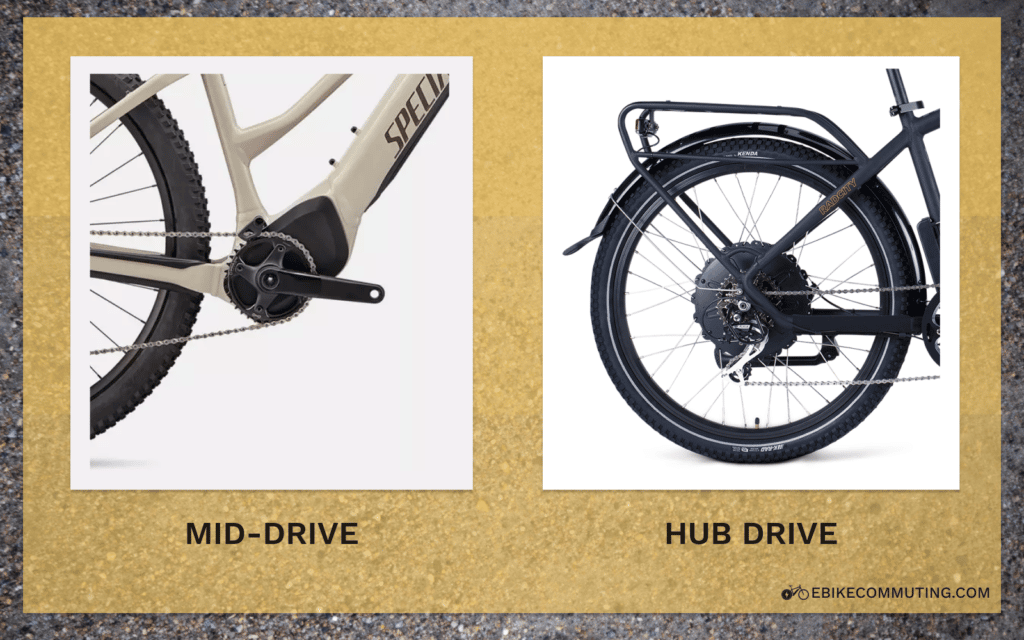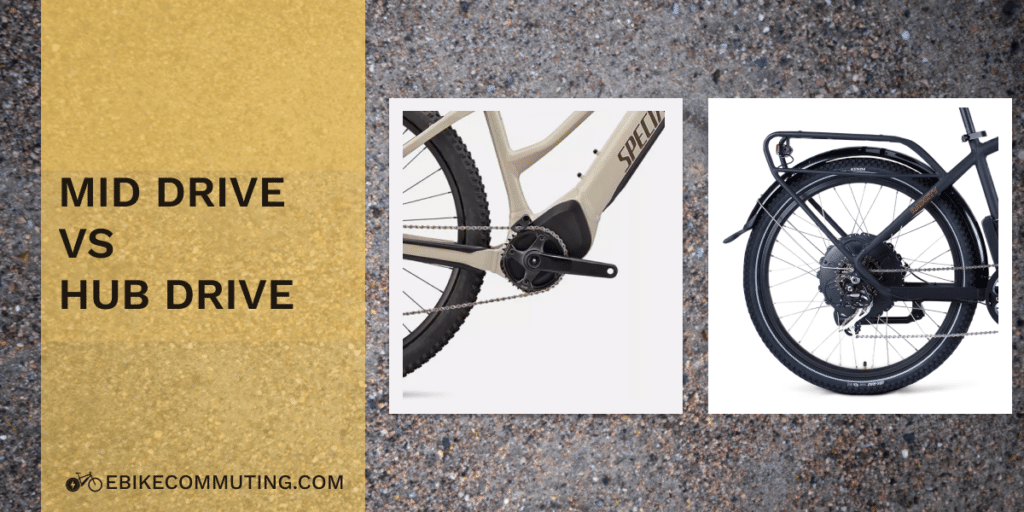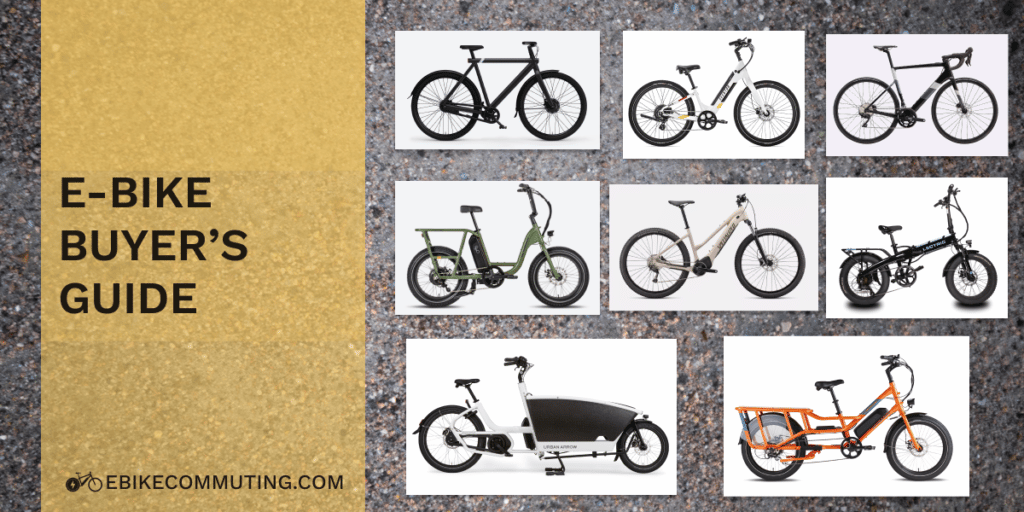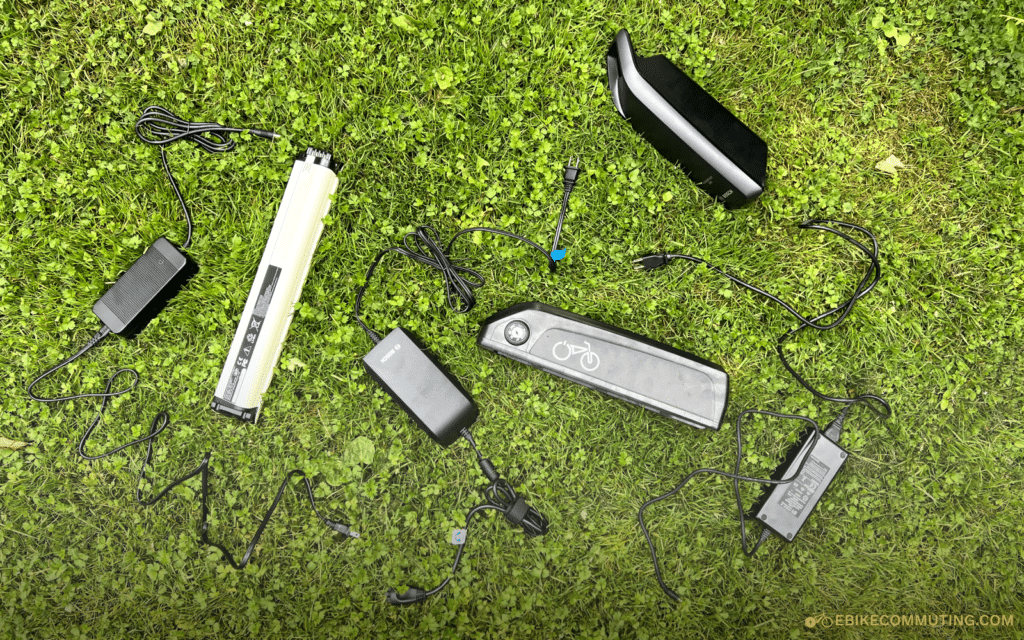When it comes to choosing an electric bike, there are a lot of factors to consider. One of the big things that you’ll have to make a decision on is a hub-drive versus mid-drive e-bike. Each of these types of e-bikes has its own advantages and disadvantages, and the best choice for you will depend on your specific needs and preferences. In this article, we will explore the differences between the two types of e-bikes and help you decide which one is right for you.
Table of contents
Understanding Hub-Drive and Mid-Drive E-Bikes
What Is a Hub-Drive E-Bike?
A hub-drive e-bike is one where the motor is located in the hub of one of the wheels, typically the rear wheel. The motor is connected directly to the wheel, which allows it to provide power to the bike without the need for a traditional drive train. This design makes hub-drive e-bikes simpler and easier to maintain than mid-drive e-bikes. They are also generally less expensive than mid-drive e-bikes. However, hub-drive e-bikes can be less efficient than mid-drive e-bikes, especially when climbing hills or carrying heavy loads. This is because the motor is located in the wheel and can’t take advantage of the e-bikes gears. Sometimes you’ll find geared hub-drives which will provide better hill climbing than a traditional hub-drive.
Despite their limitations, hub-drive e-bikes are a great option for riders who prioritize simplicity and affordability over performance and efficiency. They are ideal for urban commuting, leisurely rides, and flat terrain.
What Is a Mid-Drive E-Bike?
A mid-drive e-bike, on the other hand, is one where the motor is located near the bottom bracket, where the pedals attach to the frame. The motor drives the chain, which provides power directly to the rear wheel. This design allows for greater efficiency and better weight distribution than a hub-drive e-bike. Because the motor is located in the center of the bike, it can take advantage of the bike’s gears to provide more torque and power when climbing hills or carrying heavy loads. This makes mid-drive e-bikes more versatile and suitable for a wider range of riding conditions.
Mid-drive e-bikes are generally more expensive and complex than hub-drive e-bikes, but they offer superior performance and efficiency. They are ideal for riders who prioritize power, versatility, and efficiency over simplicity and affordability. Mid-drive e-bikes are perfect for off-road adventures, long-distance touring, and hilly terrain.
When choosing between a hub-drive and a mid-drive e-bike, it’s important to consider your riding needs and preferences. If you’re looking for a simple, affordable, and easy-to-maintain e-bike for urban commuting or leisurely rides, a hub-drive e-bike may be the best option for you. But if you’re looking for a powerful, efficient, and versatile e-bike for off-road adventures or long-distance touring, a mid-drive e-bike is definitely worth the investment.

Performance Comparison
When it comes to performance, there are several factors to consider when comparing hub-drive and mid-drive e-bikes. Let’s take a closer look at how they compare.
Power and Torque
One important factor to consider is the power and torque of the e-bike. Hub-drive e-bikes typically have higher torque than mid-drive e-bikes. The hub motor is integrated into the wheel, providing direct power to the wheel and making it easier to climb hills. However, mid-drive e-bikes are generally more efficient and provide better power delivery overall. Mid-drive e-bikes have the motor mounted at the bottom bracket, which means the motor can take advantage of the bike’s gears to provide more efficient power delivery.
It’s also worth noting that hub-drive e-bikes can be heavier than mid-drive e-bikes due to the weight of the motor being integrated into the wheel. This can affect the handling and maneuverability of the bike.
Efficiency and Range
Another important factor to consider is the efficiency and range of the e-bike. Mid-drive e-bikes are generally more efficient than hub-drive e-bikes due to their design. This means they can travel further on a single charge. However, the range of an e-bike will also depend on factors like the size of the battery and how much assistance you use while riding.
It’s important to note that both types of e-bikes can have a range of up to 60 miles on a single charge, depending on the battery size and usage. This makes them a great option for commuting or longer rides.
Maintenance and Reliability
When considering purchasing an e-bike, maintenance and reliability are important factors to keep in mind. While e-bikes are generally low-maintenance compared to traditional bicycles, it’s still important to choose one that is reliable and easy to maintain. Here’s how hub-drive and mid-drive e-bikes compare in terms of maintenance and reliability.
Wear and Tear on Components
One potential disadvantage of hub-drive e-bikes is that they can put more wear and tear on the wheel and tire. The motor is connected directly to the wheel, which can cause increased wear and tear over time. This can be especially true if you frequently ride on rough terrain or carry heavy loads. On the other hand, mid-drive e-bikes distribute the power more evenly and do not put as much stress on any single component. This can help to increase the lifespan of your e-bike, as well as reduce the need for costly repairs or replacements.
Ease of Maintenance
In terms of ease of maintenance, mid-drive e-bikes have an advantage. The motor is located in the center of the bike, which makes it easier to access and work on. This can be especially important if you plan on doing your own maintenance and repairs. Hub-drive e-bikes can be more difficult to repair or replace, especially if the motor is integrated into the wheel itself. This can make it more expensive to maintain your e-bike over time, as you may need to take it to a professional bike shop for repairs.
Longevity and Durability
Both hub-drive and mid-drive e-bikes can be durable and long-lasting, but it is important to choose a high-quality e-bike with good components if you want it to last. Investing in a high-quality e-bike can help to ensure that it lasts for many years, even with regular use. Proper maintenance is also key to ensuring the longevity and durability of your e-bike. This includes regular cleaning, lubrication, and tune-ups, as well as replacing any worn or damaged components as needed.
Ultimately, the choice between a hub-drive and mid-drive e-bike will depend on your individual needs and preferences. Both types of e-bikes have their advantages and disadvantages, so it’s important to carefully consider your options before making a decision. By choosing a reliable and well-maintained e-bike, you can enjoy the many benefits of electric biking for years to come.
Cost and Value for Money
The final factor to consider when purchasing an e-bike is the cost and overall value for money. Choosing between a hub-drive and mid-drive e-bike can be a tough decision, but understanding the differences in cost and value can make the decision easier.
When considering the initial purchase price, it’s important to note that hub-drive e-bikes are generally less expensive than mid-drive e-bikes. This makes them a good choice if you are on a budget. However, it’s important to remember that you get what you pay for. A cheaper e-bike may have lower quality components or a shorter lifespan, which could end up costing you more in the long run.
When it comes to maintenance and replacement costs, mid-drive e-bikes may be more expensive. However, it’s important to keep in mind that mid-drive e-bikes are generally more efficient and require less maintenance overall. This means you may save money in the long run, even if the initial cost is higher.
Another factor to consider is the resale value of your e-bike. Mid-drive e-bikes may hold their value better over time, especially if they are high-quality and well-maintained. This can be an important consideration if you plan to upgrade or replace your e-bike in the future.
It’s also important to consider the overall value for money when purchasing an e-bike. A more expensive e-bike may have additional features or higher quality components that make it a better investment in the long run. Additionally, a more expensive e-bike may be more enjoyable to ride, which can make it worth the extra cost.
Our Recommendation
As you can see, there are many factors to consider when choosing between a hub-drive and mid-drive e-bike. Ultimately, the best choice for you will depend on your specific needs and preferences. For our commutes, we prefer mid-drive motor e-bikes because they tend to also have a torque sensor. A mid-drive motor with torque sensor gives you the most natural riding feel because the motor is applying force from where it would on a traditional bike. Additionally, the torque sensor is better at monitoring the amount of force that you are applying to the pedals.
All that being said, we also have e-bikes that have rear hub motors and cadence sensors. These e-bikes tend to be less expensive and they are still a lot of fun to ride and make great commuter e-bikes. For the first 4 years of e-bike commuting I rode a rear hub motor e-bike and loved it. You can’t really go wrong with either.



